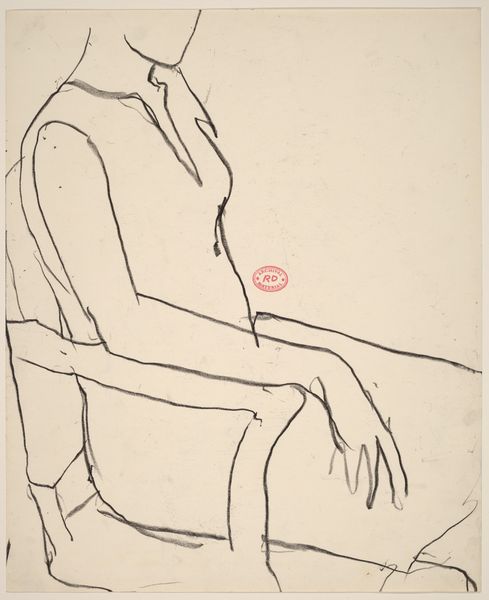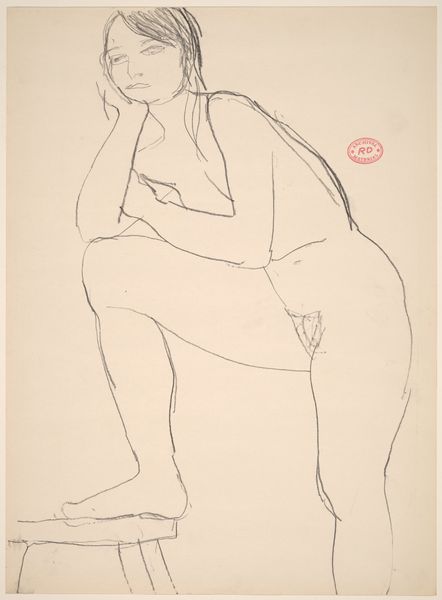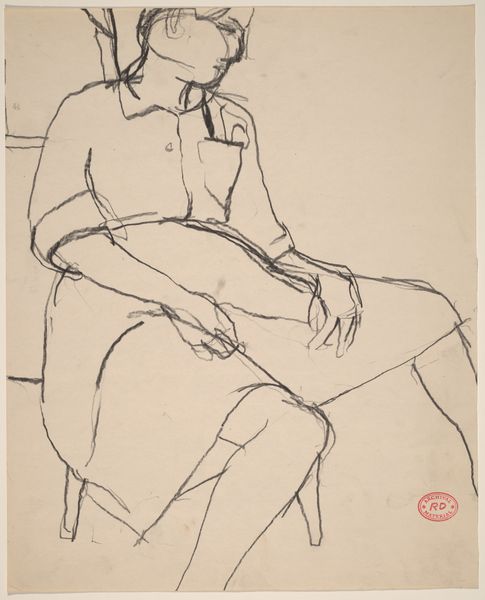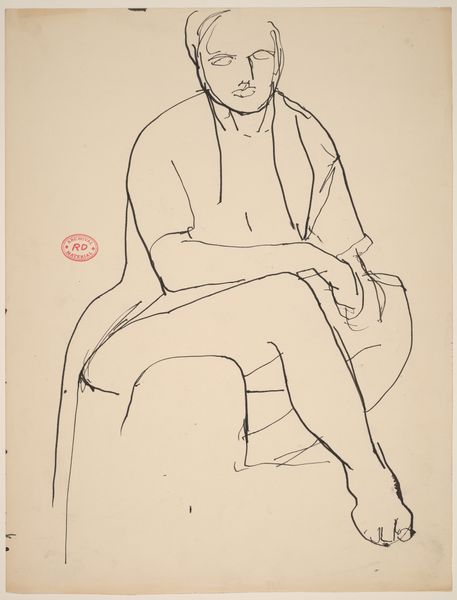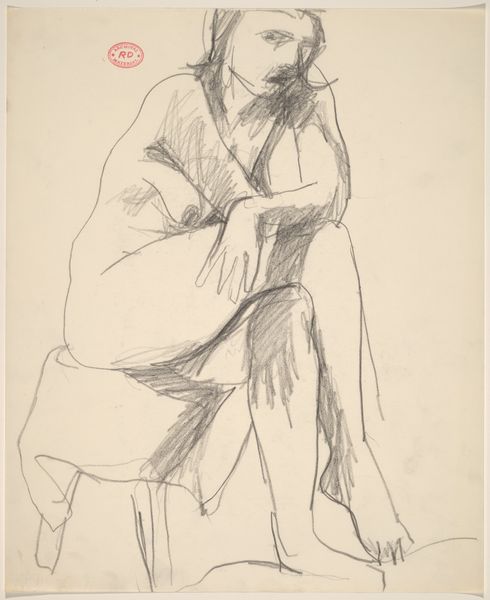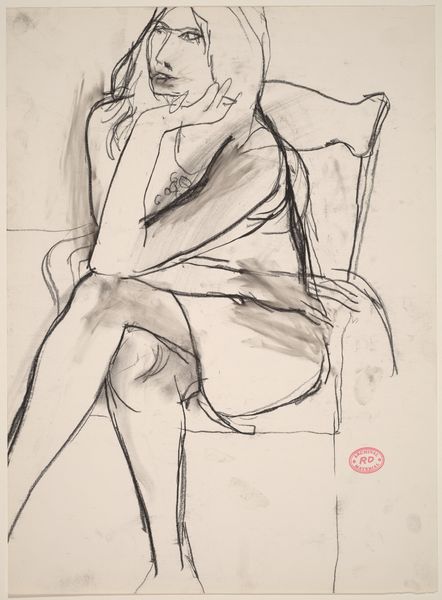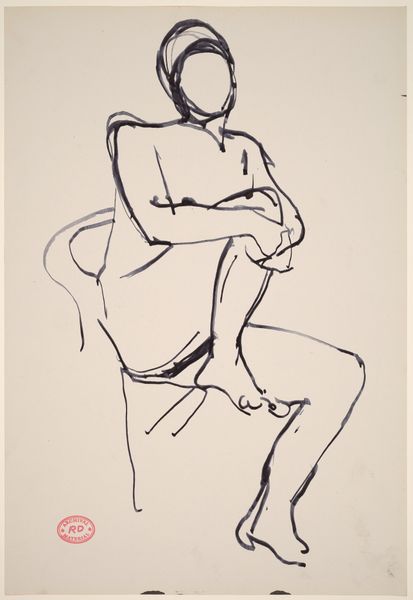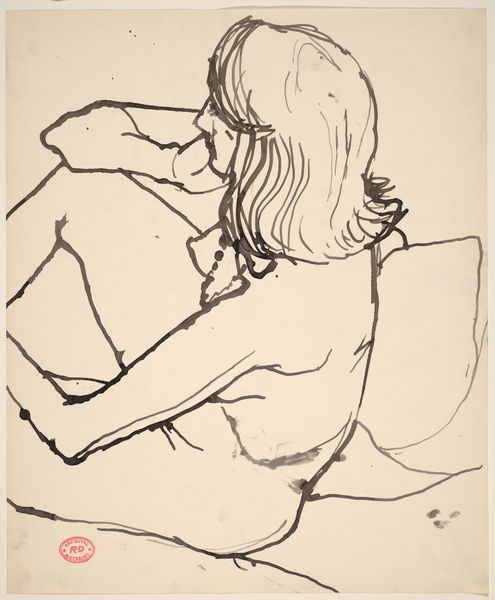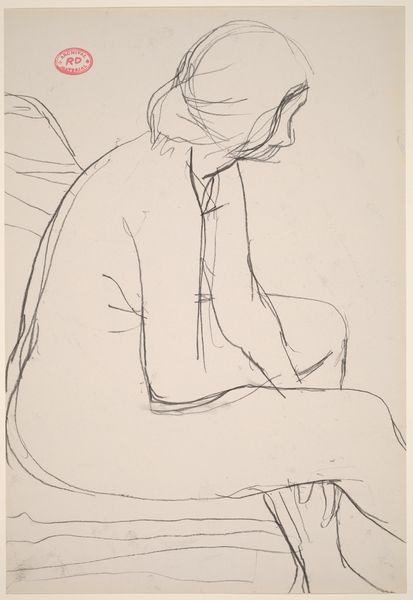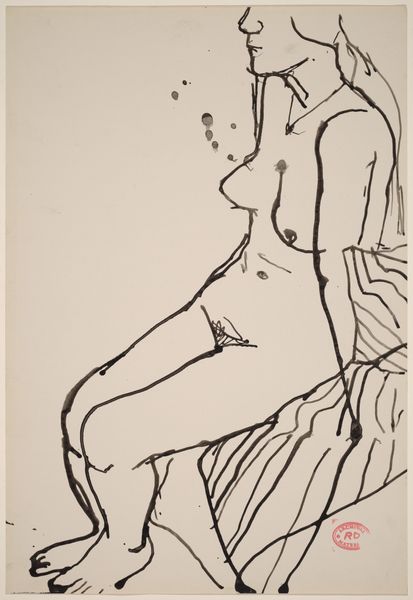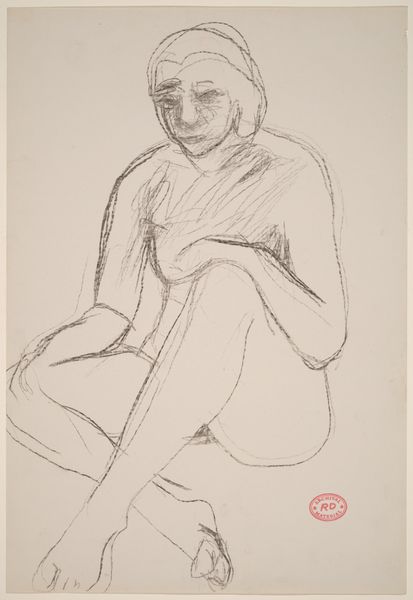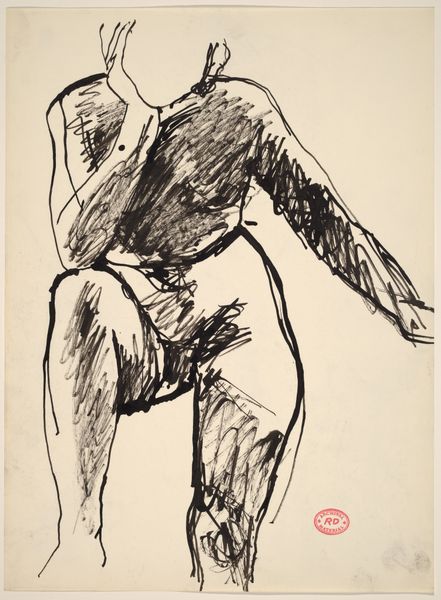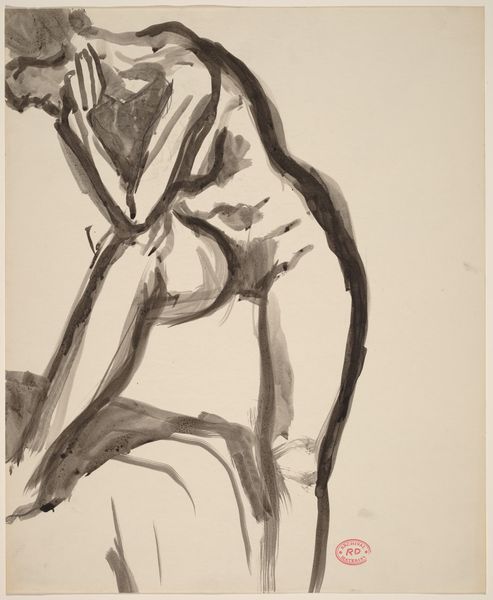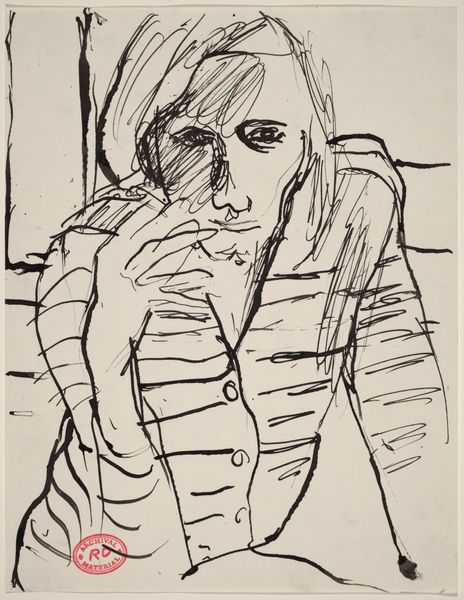
drawing, ink
#
portrait
#
drawing
#
ink drawing
#
figuration
#
bay-area-figurative-movement
#
ink
#
line
#
modernism
Dimensions: overall: 31 x 21.5 cm (12 3/16 x 8 7/16 in.)
Copyright: National Gallery of Art: CC0 1.0
Curator: Richard Diebenkorn’s ink drawing, *Portrait of a Woman*, created sometime between 1955 and 1967. What strikes you initially? Editor: There's a striking simplicity to the lines, yet it captures a distinct mood – a sort of quiet introspection or pensiveness. The scale is intimate; you feel almost as if you're sitting across from the subject. Curator: Indeed. Diebenkorn employs line, starkly presented with this monochromatic ink, not to precisely delineate contours, but rather, it serves to define spatial relationships and express the essence of form through minimal means. Consider the negative space, activated by each stroke. Editor: I’m immediately drawn to that use of ink itself. It seems raw and immediate. You can almost sense the artist's hand and the way the ink might have bled into the paper. The imperfections, those drips and splatters, they feel integral to the piece. Was this a quick study or a more prolonged exploration, I wonder? Curator: It seems, judging by the weight of some of the lines, the pressure varied to add more contrast within the flat picture plane and suggest mass, but never truly coalescing into the expected traditional realism. It stays presentational in ways true figuration, I think, is typically not. Editor: And that’s a strength here; it becomes about the application, about a record of a gestural encounter, a mark of Diebenkorn's time and engagement with this subject. The lines become more than just representational tools; they convey a physicality that pulls the viewer in. The tension resides there in how line creates or dissolves mass, if you will. Curator: Precisely! The very essence of the depicted. By refusing meticulous details, we gain something more vital. The drawing achieves a sort of universal, or idealized form by denying all individuating material realities—while simultaneously retaining individuality through process! Editor: So while this might be read formally through line and structure and pictorial space as you suggest, I feel that the artwork lives foremost through the trace of the hand at work in these interesting materials. What lasting impression does it leave you with after this careful viewing? Curator: A persistent awareness of how much can be said with so very little and the pure, essential delight found in observing. Editor: For me, it's a renewed appreciation for the immediacy of mark-making and the stories held within simple materials—ink and paper, transformed.
Comments
No comments
Be the first to comment and join the conversation on the ultimate creative platform.
